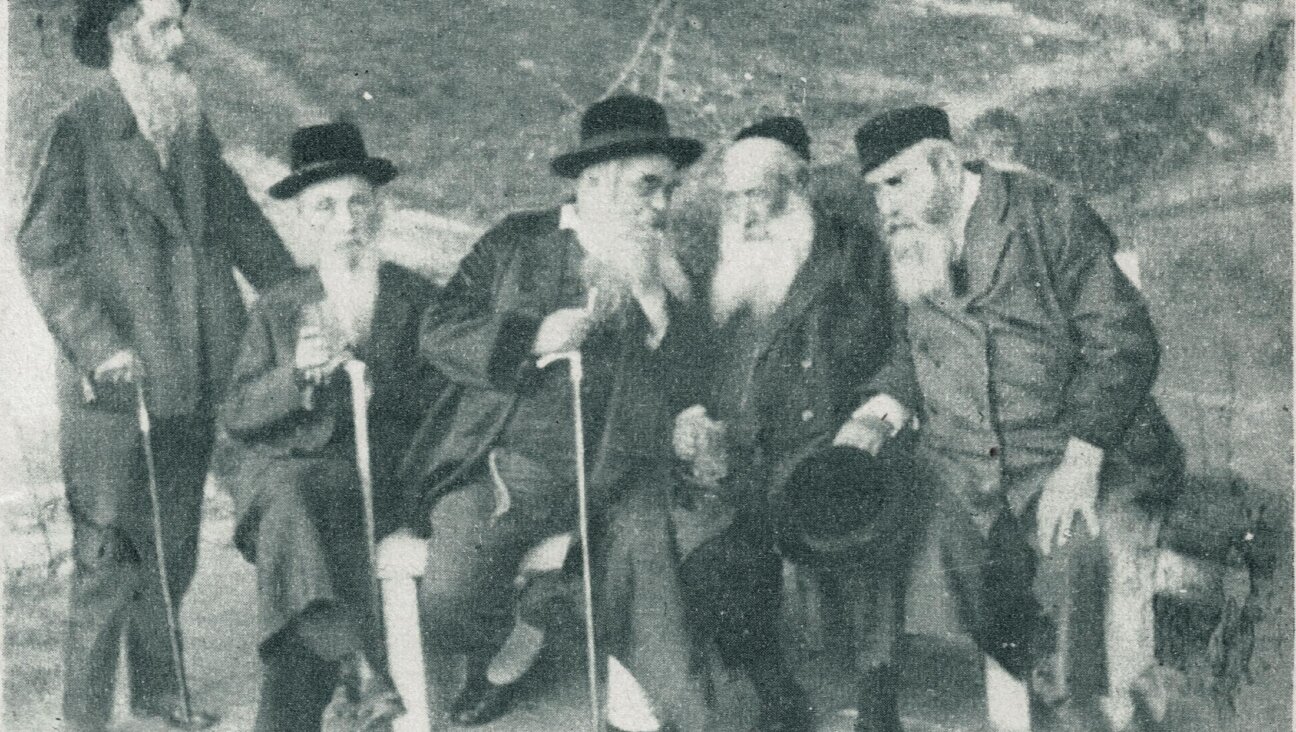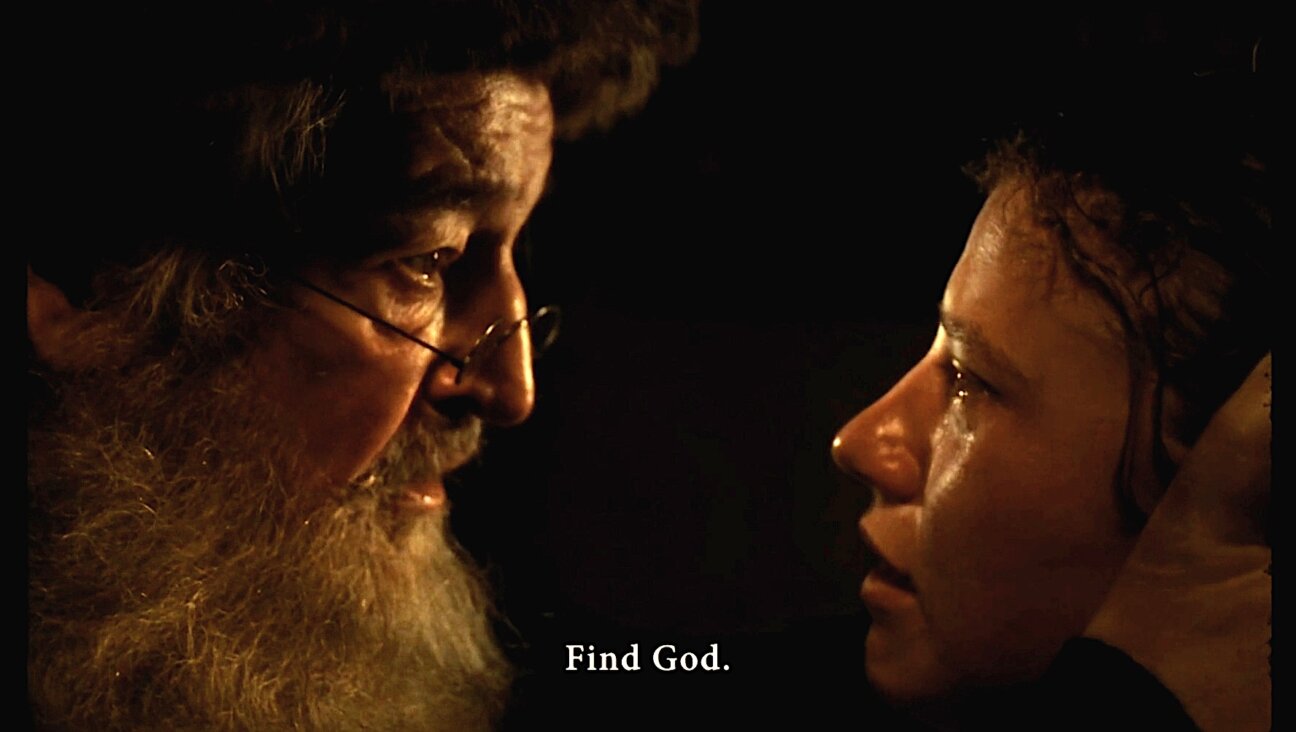The Holocaust survivor in the typewriter repair shop
It wasn’t the sad smile or the stained apron that made me remember him so well. It was the tattoo on his forearm.

Photo by Wikimedia Commons
Many years ago — a sakh yorn tzurik, as we say in Yiddish — when I had little money and was still an unpublished writer, I moved to a street in Manhattan with many used bookstores.
It was a safe neighborhood, but somewhat shabby. Storefront after storefront displayed dog-eared books with torn paper covers. Sometimes the books were scattered about on the floor, haphazardly. At other times, aging books were shoved onto bookcases that had also seen better days. Each bookcase smelled musty inside.
It was a perfect place to shop for out-of-print titles and to find forgotten books from yesteryear. This neighborhood was also a good nesting place for aspiring writers who were just as cash-strapped as I was. Rumor had it that many itinerant authors resided in the region, and some were said to be recognized — even renowned — shrayber (writers) rather than grafomanen (literary dilettantes) in a language that clearly distinguishes levels of literary hierarchy.
Only one storefront was unique — and that was the typewriter repair shop, the one with wide windows that flanked a narrow walkway leading to the entrance. In the showcase were old Underwoods, the stately ones that stood tall and proud, the type that I learned to type on when I was 10. There were several portable manual typewriters, some still sitting in their cases and some still missing a metal key or two, as they awaited repair. Rare electric typewriters — like the blue and white one I myself owned — nestled in the corners, as if they were ashamed to be compared to the classics.
“This is the perfect place for a typewriter repair shop,” I thought. Writers always needed their trusty typewriters. I myself always needed new ribbons; in this case — the ones embedded in plastic cases, and inserted into electric typewriters, and not the messy ink-laden ones that rolled on wheels.
Nearly every week, I visited the shop to buy a new ribbon (which should rightly be called a “diskette” rather than a “ribbon”) but I clung to my atavistic expression even after I traded my old Underwood for a faster electric model. Each week, as soon as I rang the doorbell, the same man would appear in the showroom, wiping the grease and grime from his forearms. Even the front of the shop smelled of oil, reminiscent of auto repair shops but minus those annoying gasoline fumes.
The man — whose name I never knew — always wore a stained apron. I was never sure if he was the owner or a worker, until I heard him answer the phone one day, and say, “Yo, ikh bin der kremer,” or “Yes I’m the owner,” in Yiddish. He always wore a sad smile.
But it wasn’t the sad smile or the stained apron that made me remember him so well. It was the tattoo on his forearm, which was clearly visible as he wiped away grease from his hands and arms. In those days, long before tattoos became fashion statements, only three types of people sported tattoos: sailors, ex-inmates and concentration camp survivors.
I tried to avert my gaze but was never sure how well I succeeded. I knew better than to ask about the tattoo. I had seen all too many in my youth. I lived on the far north side of Chicago, near Skokie, where many survivors settled after the war. Yet no matter how many times I saw these tattoos, I still felt the pain of such reminders. It was hard to imagine what the bearer of the tattoo had endured di lagern, in the death and labor camps. To let him know that I, too, was Jewish, I made it a point to wish him a “good Shabbos” whenever I went to his shop on a Friday afternoon. Whenever that happened, his sad smile lasted a bit longer.
I wondered if he had learned his trade before the war, or if he survived the camps because his skill made him useful to the Nazis. The Nazis were, after all, methodical, and it made sense that they, too, needed a ready supply of working typewriters to write letters or record orders. I embroidered a backstory, where I imagined that he alone survived even if his family did not, because he alone had abilities exploited by the Nazis.
Time passed, and then an important event occurred: di kompyuter-tkufe, or the advent of the computer era. It was the early 80s, and affordable home computers had recently become available. Room-sized computers had shrunk to the size of a desktop. I started with an embarrassingly feeble Radio Shack 100 laptop, which I purchased for $100. When a neighbor saw me hauling the bulky box onto the elevator, he predicted that I would soon upgrade and buy a “real computer” — once I got the hang of the baby computer. He was right. But he didn’t predict what else came to pass.
It wasn’t long before I acquired that “real computer,” a desktop model with floppy disk drives. With a little effort, I learned word processing with WordStar — another relic of the early computer era. Soon enough, my computer keys were flying at breakneck speed, and I was touch-typing faster than ever before. (Learning to type at age 10 conferred a distinct advantage for lifelong speed-typing.)
That ugly putty-colored computer was a godsend to me. I could write more than ever. It wasn’t an IBM or even a Dell; it was just a cheap knock-off from J&R. But it was more than adequate for my needs. I couldn’t imagine returning to my electric blue-and-white Royal typewriter again. (I had chosen a blue-and-white model to resemble the Israeli flag.) My trusty electric typewriter suddenly felt as antiquated as the old upright Underwood in the typewriter repair shop window.
While looking around the room, in hopes of finding the perfect spot for this new sort of shraybmashin (typewriter), I spotted an unopened box of typewriter ribbons that I had purchased in bulk once I could afford to buy more than one ribbon a week. I never imagined that my old typewriter — or its ribbons — would become obsolete so fast. So, I picked up the cardboard box, and made my way to the typewriter repair shop.
As I entered the shop, the storekeeper started to shake his head from side to side, as if he anticipated my next words. To this day, I’m ashamed to say that I asked him if he accepted unopened returns. He looked at me, his eyes even sadder than ever before, and said: “No, no returns.” I understood and left.
The next time I passed the shop, the door was latched, and the windows were boarded up with wood. A red “for rent” sign had replaced the typewriter display. Customers no longer lined up at the shop, presumably because they had also switched. The computer age was a blessing for many, but not for this man.
A message from our Publisher & CEO Rachel Fishman Feddersen

I hope you appreciated this article. Before you go, I’d like to ask you to please support the Forward’s award-winning, nonprofit journalism during this critical time.
At a time when other newsrooms are closing or cutting back, the Forward has removed its paywall and invested additional resources to report on the ground from Israel and around the U.S. on the impact of the war, rising antisemitism and polarized discourse.
Readers like you make it all possible. Support our work by becoming a Forward Member and connect with our journalism and your community.
— Rachel Fishman Feddersen, Publisher and CEO





























